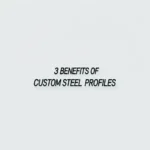Sheet that’s too thin dents and warps; too thick costs and slows bending. Pick thickness by what the part must do: span without wobble, resist dents, and take a clean bend.
Start with the job
- Touch surfaces: choose a thickness that feels solid under hand.
- Spanning panels: match thickness to support distance; add beads/flanges for stiffness.
- Bending: thicker sheet needs larger inside radii and more tonnage; protect polished finishes.
Practical bands (304/316 cold‑rolled)
| Use | Thickness | Notes |
|---|---|---|
| Light covers | 0.8–1.0 mm | Short spans, protect finish |
| General panels | 1.2–1.5 mm | Good feel and bendability |
| Worktops/doors | 1.5–2.0 mm | Better dent resistance |
| Heavy panels | 2.5–3.0 mm | Longer spans, robust |
Design tips
- Use hems/flanges to stiffen thin sheet instead of jumping thickness.
- Minimum inside radius ~1.0t typical for stainless; check your brake.
- Weight: 1.5 mm ≈ 12 kg/m²; 2.0 mm ≈ 16 kg/m² (304).
Spec (copy/paste)
- Material: 304 2B, 1.5 mm
- Finish: No.4 film‑protected on visible faces
- Forming: Min inside radius ≥ 1.0t; grain along bend
- Edges: Deburr after laser
Baoli Engineering Team · Reviewed Oct 31, 2025




